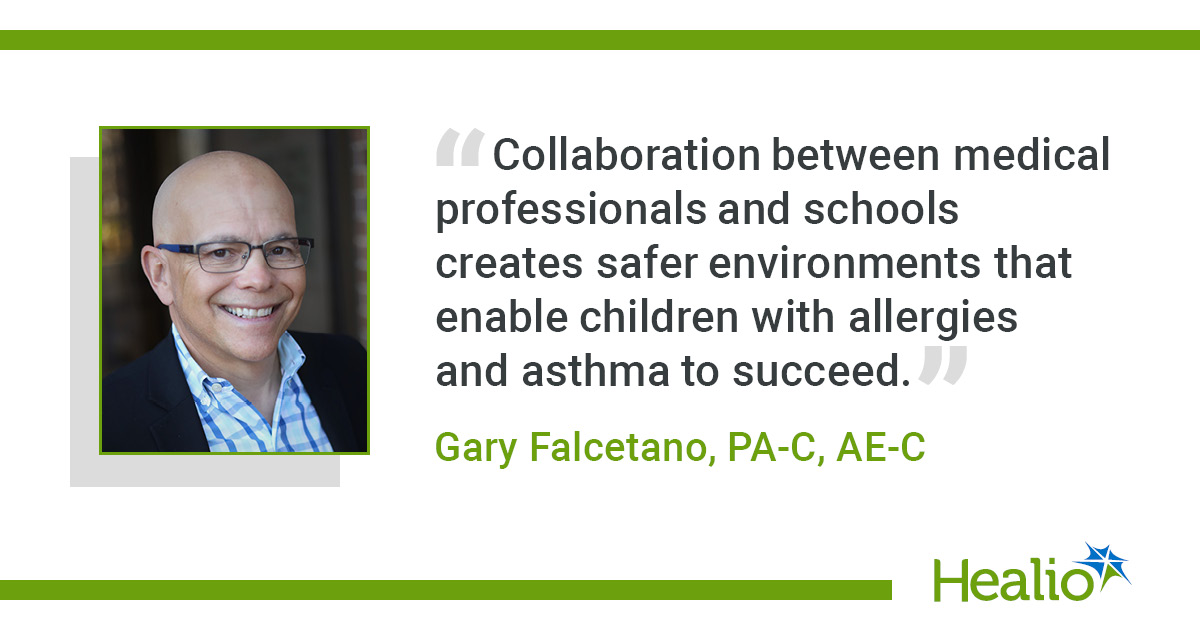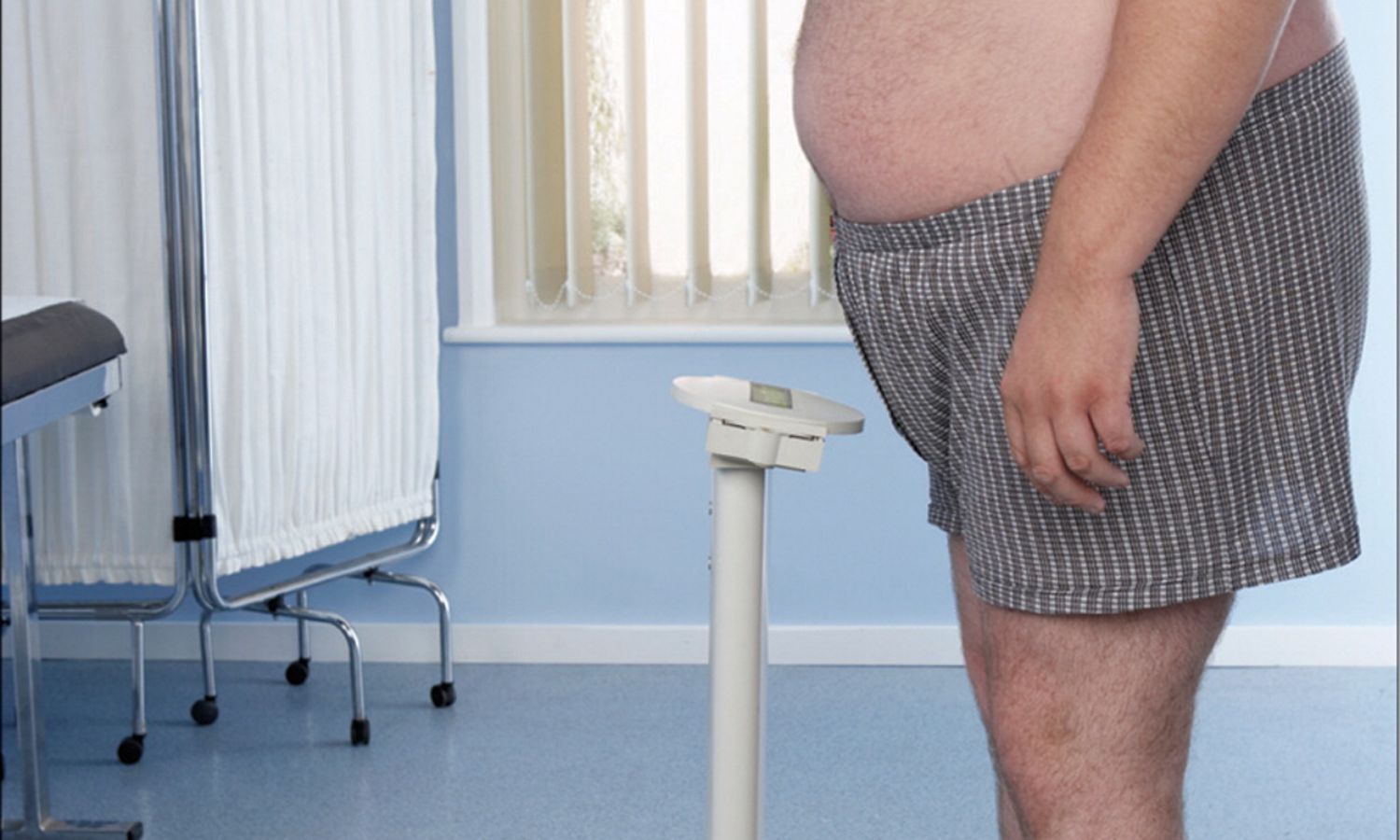August 12, 2025
7 min read
Key takeaways:
- Allergy testing should be a part of back-to-school preparations in those with asthma.
- Primary care providers and pediatricians are commonly the first line of defense in asthma and allergy management.
For parents and teachers, back-to-school season is a busy time, and this is also true for allergists, pediatricians and primary care providers.
According to Gary Falcetano, PA-C, AE-C, U.S. scientific affairs manager for allergy in immunodiagnostics at Thermo Fisher Scientific, children and adolescents with allergies and/or asthma are exposed to various new triggers when returning to school that could worsen their condition.

Additionally, September has been recognized as “Asthma Peak Month” by the Asthma and Allergy Foundation of America and the American College of Allergy, Asthma & Immunology because of the spike in asthma attacks that occurs during this month from respiratory illnesses/viruses, environmental allergens and poor indoor air quality in schools.
Healio spoke with Falcetano to learn more about the importance of allergy testing during back-to-school season, how clinicians can partner with schools to create safe environments and ways PCPs and pediatricians can partner with allergists to provide multidisciplinary care.
Healio: During the back-to-school season, what do clinicians commonly see in children related to allergies?
Falcetano: The return to school often brings a noticeable uptick in allergies and asthma-related visits. Clinicians frequently see flare-ups of allergic rhinitis, asthma exacerbations and reactions to common triggers such as food, insect stings or environmental allergens — particularly among children who may have become inconsistent with their medication routines over the summer.
Classroom and school environments introduce a mix of indoor and outdoor triggers. Indoors, common allergens include dust mites, mold, pet dander and potential food exposures from shared spaces such as lunchrooms or classrooms. Outdoors, fall pollen — especially ragweed and outdoor molds — are major concerns. Children with exercise-induced bronchoconstriction may also experience increased symptoms during gym or recess. In addition to these common indoor and outdoor allergens, addressing nonallergic triggers such as chalk dust, scented cleaning products or volatile organic compounds from paints or other chemicals is also important as they can cause symptoms in children with hyperreactive airways.
Proactive planning is essential. Following treatment or symptom management plans consistently over the summer, updating prescriptions or action plans ahead of the school year and working with school staff to ensure preparedness for asthma, allergies or anaphylaxis can significantly reduce risks. These steps help ensure children stay healthy, safe and ready to learn as they transition back into the school environment.
Healio: What do PCPs and pediatricians need to know about allergy testing before sending kids back to school?
Falcetano: Assessment of potential allergic triggers should be performed as a standard practice in asthma management for children because allergic triggers play a significant role in exacerbating symptoms. The research shows that allergic sensitizations affect up to 90% of children who have asthma. The NIH, together with the CDC, support allergy testing for all patients who have persistent asthma regardless of their control status. With the identification of allergic triggers, health care providers can develop individualized avoidance plans that effectively decrease symptoms and reduce both school absences and emergency care requirements.
The wide availability of specific immunoglobulin E (sIgE) blood tests — such as Thermo Fisher Scientific’s ImmunoCAP assays — has transformed allergy diagnostics by enabling the simultaneous detection of multiple allergen sensitizations from a single small blood sample. This method can reveal concealed allergic triggers that can be challenging to identify through history alone, making the diagnostic process more efficient. Providers need to understand that sensitization results do not always indicate clinical allergy, so they should interpret test results together with a patient’s thorough background — including symptoms consistent with IgE-mediated allergy, exposure information and repeated reactions to create effective management plans. Together, these tools enable clinicians to create individualized environmental control and treatment plans that can result in better patient outcomes.
Healio: What are your tips for pediatric clinicians and PCPs regarding discussions about allergy testing with parents?
Falcetano: Start with education. Parents understand the value of allergy testing when they learn how it functions as a preventive measure to help reduce symptoms. Explain that allergic triggers are often invisible and cumulative, meaning a child may not react to one allergen alone, but a combination can push them past their symptom threshold. For example, concealed allergens including dust mites and pet dander, which frequently exist in educational facilities and individual homes, should be considered. Parents also need education on how receiving an early and accurate diagnosis and developing an effective treatment plan can decrease the likelihood of an ED visit and help keep their children feeling well and attending school symptom-free.
When discussing allergy testing with parents, it’s helpful to address common concerns upfront, such as worries about discomfort from skin prick tests or confusion about what a positive result means. Emphasizing that specific IgE blood testing is a safe, routine procedure that can reveal invisible triggers and often helps parents feel more comfortable. It’s also important to frame testing as a proactive step that, together with a detailed patient history, informs a tailored management plan — not just a diagnosis — giving families actionable steps to reduce symptoms, help medications to be more efficacious and avoid emergencies. Preparing parents for what to expect during testing, including the possibility of false positives or negatives, sets realistic expectations and fosters trust.
Healio: How can clinicians partner with schools to create safe environments?
Falcetano: Communication is key. Parents should collaborate with schools to identify and reduce potential triggers by sharing anaphylaxis and/or asthma action plans when needed and making sure emergency medications such as epinephrine or rescue inhalers are accessible. Teachers, coaches and school nurses should be informed and up-to-date on the child’s allergy or asthma plan, as well as be ready to intervene when needed. The proper administration of rescue inhalers by staff members requires a complete understanding of when and how to use them for patients with asthma. The medical community can assist families by keeping them updated about new policies.
The revised Dillon’s Law reintroduced in Congress last month would extend epinephrine availability by permitting trained personnel beyond school staff to administer it in educational facilities. The bipartisan bill, which honors the memory of a Wisconsin 18-year-old who suffered a fatal allergic reaction to a bee sting, has received support from allergy advocacy organizations to enhance emergency readiness in educational institutions. The knowledge of such laws demonstrates why families must work with schools and providers to build educational programs and preparedness systems.
Parents should inquire about classroom conditions including ventilation systems, pet presence and chalk usage because these factors can worsen symptoms. A well-informed school team working together will effectively decrease potential risks.
Clinicians should advise families to work with schools on creating environmental changes that lower potential allergen exposure. The combination of better classroom ventilation and scheduled outdoor activities during low pollen periods along with reduced use of chalk and scented cleaning products can create substantial improvements. Medical professionals should present examples of effective school programs that implement these changes to encourage school administrators and staff to adopt allergy-friendly policies. Collaboration between medical professionals and schools creates safer environments that enable children with allergies and asthma to succeed.
Healio: How can PCPs and pediatricians partner with allergists to ensure appropriate and effective care?
Falcetano: PCPs and pediatricians play a critical role in asthma and allergy management, often serving as the first line of defense and managing most patients outside of specialty care settings. They are well positioned to identify symptoms, initiate allergy testing — such as specific IgE blood tests — and develop initial management plans. If patients’ symptoms prove difficult to control, appropriate referrals to allergists for specialized care such as allergen immunotherapy or biologic medications may be indicated. When medical professionals collaborate through sharing asthma action plans, medication histories and test results through local referral pathways, it improves care continuity and leads to better outcomes. This team-based approach helps families feel confident that their child is receiving coordinated, comprehensive care.
Healio: Do you have advice for allergists on how they can be better partners with PCPs and pediatricians?
Falcetano: Make it easy for primary care teams to refer and receive actionable information. Clear communication, especially around test results, environmental control recommendations and follow-up plans go a long way. Tools such as simplified allergen exposure reduction guides or downloadable asthma action plans can support shared management.
It’s also helpful to educate referring providers about the broader value of allergy testing beyond just identifying “what a child is allergic to.” Results can be used to help reduce symptoms, lower medication burden and decrease health care utilization. According to the CDC, about 40% of primary care visits are for chronic conditions. With increasing clinician shortages and longer waiting times to see both allergists and PCPs, specific IgE testing offers a cost-effective, efficient way for clinicians to help improve asthma control and reduce asthma-related morbidity, costs and avoidable appointments. When allergists equip PCPs with practical, evidence-based tools and support, they strengthen the continuum of care and help ensure more children get timely, effective management.
Healio: How can allergists, PCPs and pediatricians prepare for “Asthma Peak Week” during the third week of September?
Falcetano: Asthma Peak Week is a predictable, high-risk period. Many children enter it unprepared due to potentially missed medications over the summer, increased viral illnesses, unknown allergic triggers and a sudden increase in exposures.
This is a key opportunity for all providers, PCPs, pediatricians and allergists to act proactively. Review medications, update asthma action plans, assess control and consider laboratory assessment of allergic triggers if not already done. Even simple steps like identifying common household allergens and making small environmental changes can lead to fewer symptoms, fewer missed school days and reduced emergency visits.
Beyond clinical management, health care providers can empower families by connecting them with relevant community tools, such as real-time pollen and air quality alerts or public health initiatives that support proactive symptom control. These tools help patients and caregivers to prepare for and reduce exposure to environmental threats. The assessment of social determinants of health including medication access, stable housing and appointment transportation helps providers identify obstacles that could interfere with asthma care during peak risk times. A holistic approach to these factors leads to better symptom mitigation, reduced exacerbations and improved quality of life.
For more information:
Gary Falcetano, PA-C, AE-C, can be reached at gary.falcetano@thermofisher.com.
References:
- Anaphylaxis emergency action plan. https://www.aaaai.org/Aaaai/media/Media-Library-PDFs/Tools%20for%20the%20Public/Conditions%20Library/Library%20-%20Asthma/Anaphylaxis-Emergency-Action-Plan.pdf. Accessed Aug. 7, 2025.
- Ashman JJ, et al. National Health Statistics Reports. 2023;doi:10.15620/cdc.125462.
- Asthma action plan: How to control allergic asthma symptoms. https://www.thermofisher.com/allergy/us/en/living-with-allergies/asthma/asthma-action-plan.html. Published April 2025. Accessed Aug. 7, 2025.
- Exercise-induced bronchoconstriction defined. https://www.aaaai.org/tools-for-the-public/allergy,-asthma-immunology-glossary/exercise-induced-bronchoconstriction-defined. Published July 8, 2024. Accessed Aug. 7, 2025.
- Gern JE, et al. Immunol Allergy Clin North Am. 2005;doi:10.1016/S0889-8561(05)70086-2.
- Is your children with asthma ready for asthma peak month in September? https://acaai.org/news/is-your-child-with-asthma-ready-for-asthma-peak-month-in-september/. Published July 23, 2023. Accessed Aug. 6, 2025.
- Respiratory allergy toolkit. https://corporate.thermofisher.com/content/dam/phadia/library/en/APPROVAL_2025_US_Allergy_Respiratory_Toolkit.pdf. Accessed Aug. 7, 2025.
- The September asthma peak. https://aafa.org/asthma/living-with-asthma/september-asthma-peak-month/. Published Aug. 21, 2024. Accessed Aug. 6, 2025.










